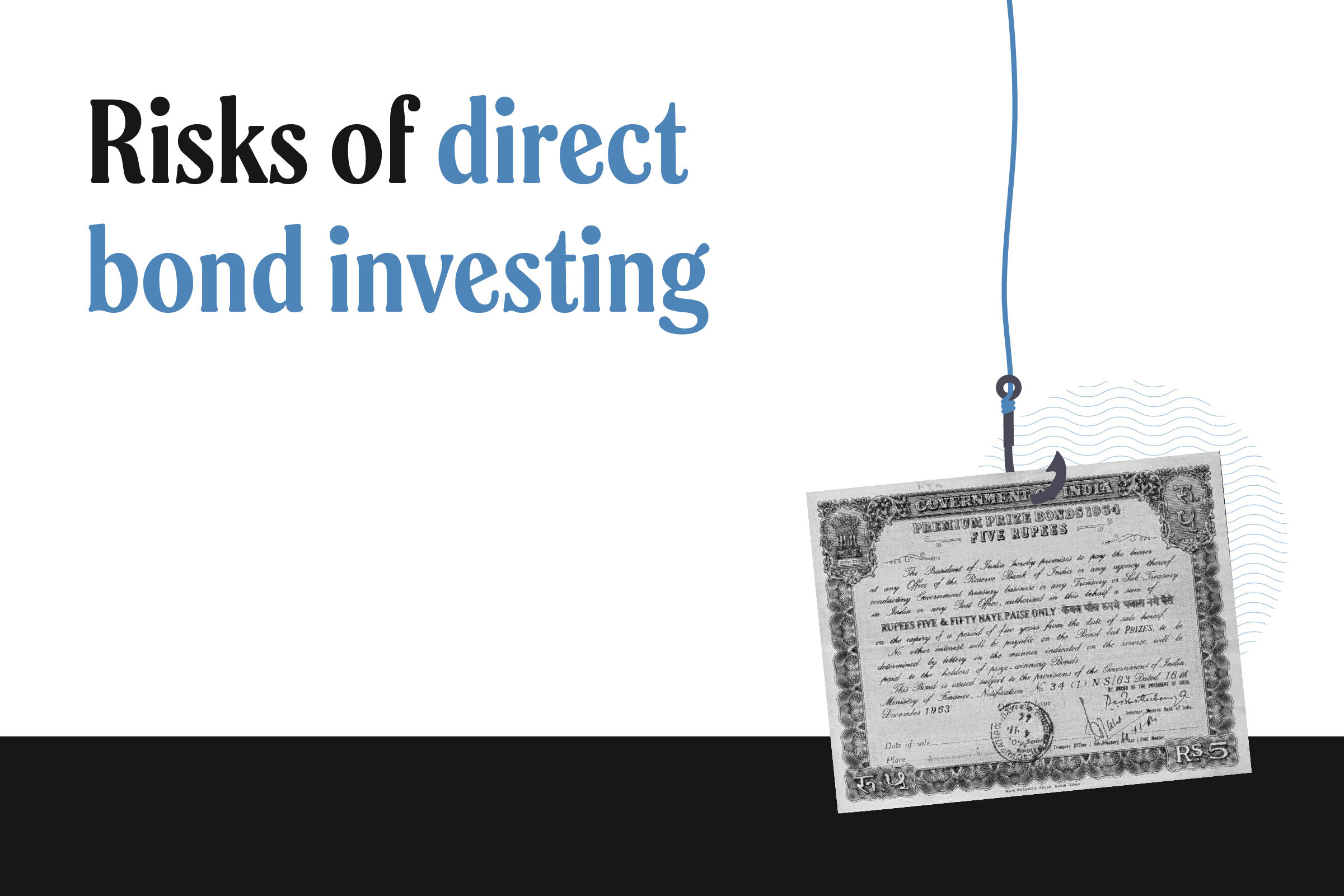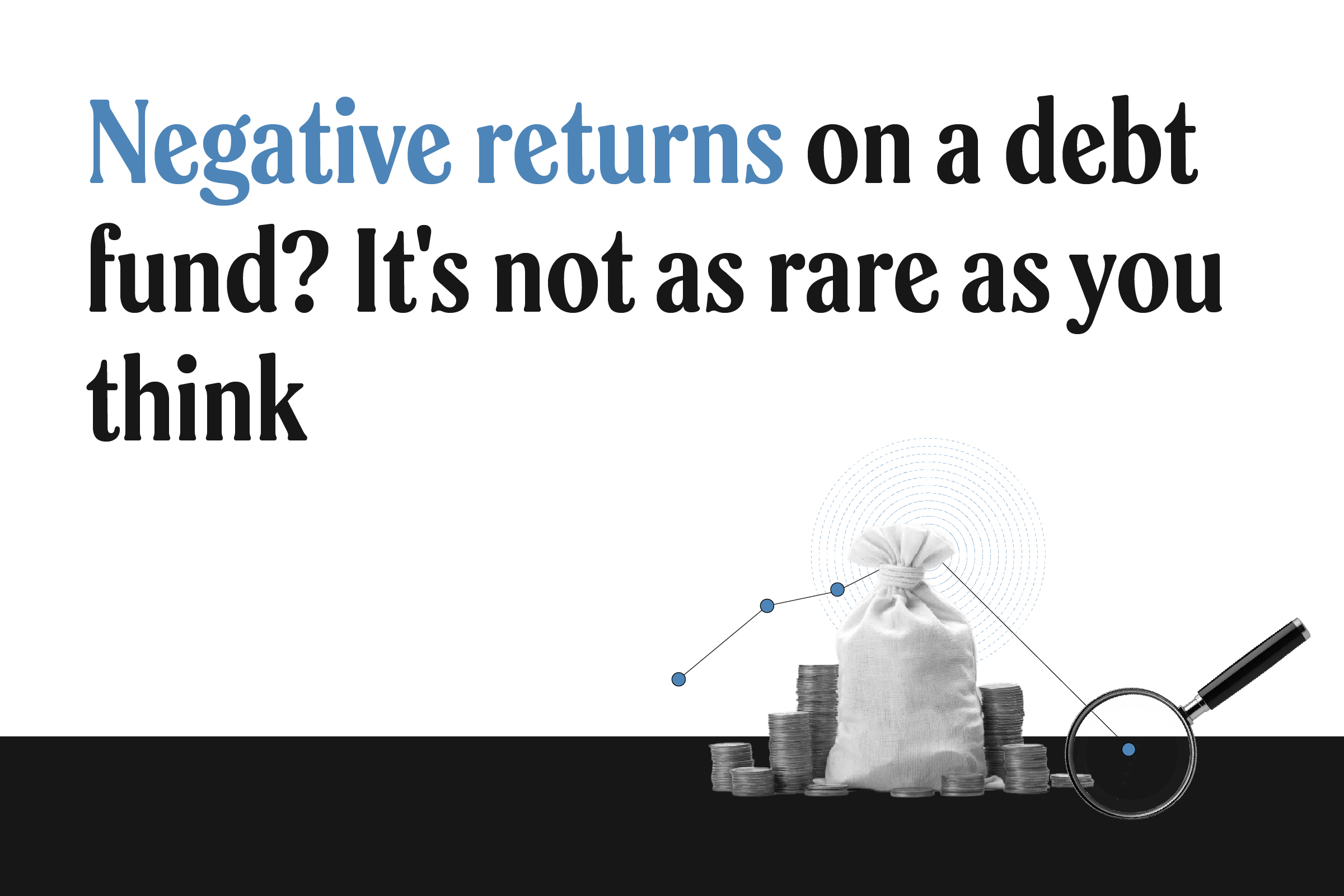Investing in mutual funds has emerged as one of the most popular investment avenues for Indians. With the potential for good returns and the convenience they offer, it’s no wonder that investors are increasingly turning towards mutual funds. However, like any other investment, mutual funds come with their own set of challenges. Making uninformed decisions can lead to substantial losses. Hence, it’s imperative for an investor to be aware of common mutual fund mistakes. Let’s dive deep and explore the top mutual fund mistakes you should avoid.
1. Neglecting Holistic Financial Planning
Mistake: Many investors dive into the world of mutual funds without determining their risk appetite, overall financial situation, and having adequate emergency funds etc. People start investing in random funds without knowing whether that fund even suits them. As per SEBI’s report, in India, 90% of the investors withdraw their mutual fund investments within 3 years of investing. Investors can’t stick to their plan because their portfolio isn’t aligned with their psychological needs. During market volatility, people tend to withdraw their investments.
Solution: Having a holistic financial understanding is very critical. Knowing your assets, liabilities, short-term and long-term needs, retirement planning etc., helps you choose the right funds. One should prefer taking the qualified advice to align your overall finances.
2.Investing based on the past performance
Mistake: Investors often get carried away by numerical data and base their decisions solely on that. A common mistake they make is choosing funds solely based on historical performance. Some investors assume the past performance period with the actual investment horizon of that fund. For eg. If a fund has performed well in the past three years, it is assumed that it’s a good choice for investment for a three year period. Fund’s historical performance is not indicative of its future returns.
Solution: Instead of focusing solely on past returns, it’s crucial to evaluate the fund’s fundamental ratios. Assess the fund’s risk profile, its ability to mitigate losses during market downturns, its consistency in performance, the fund manager’s experience etc.
3. Over-diversifying Your Portfolio
Mistake: While diversification is essential for risk reduction, over-diversification can lead to redundant portfolios with similar holdings across different schemes. In India, within equity mutual funds, 60% of the industry’s Assets Under Management (AUM) are invested in Nifty 50 stocks so you might see the same set of stocks in many funds for eg. Large-cap category majority of the fund’s portfolio look similar. Over-diversification not only increases your investment costs but also makes it challenging to monitor an excessive number of schemes.
Solution: Strive for a balanced portfolio. Instead of spreading your investments across too many funds, opt for a select few that are efficient and align well with your financial goals.
4. Overlooking Expense Ratios: A Costly Oversight
Mistake: The expense ratio reflects the percentage of a fund’s assets used for administrative and operational costs. A high expense ratio can erode your investment returns. In mutual funds, each scheme category offers two options: Direct & Regular. Direct options generally have lower expense ratios as they exclude distribution costs. Conversely, Regular options tend to have higher expense ratios due to agent commissions.
Solution: Thoroughly compare expense ratios within similar fund categories. Opt for the direct option to avoid hefty distributor commissions. Index funds also offer lower fees compared to actively managed funds.
5. Overlooking Index Funds: A Potential Missed Opportunity
Mistake: Numerous categories of actively managed funds underperform in comparison to passively managed index funds. As per the S&P Dow Jones report – SPIVA India year 2022 scorecard – 88% of active largecap funds have underperformed their benchmark. Active funds involve high fees of 1% to 2% annually, while passive index funds replicate their target indexes, charging significantly lower fees of around 0.05% to 0.10% annually.
Solution: Evaluate whether your fund consistently outperforms its benchmark. If not, consider switching to index-based funds. These funds offer the advantage of lower fees (expense ratios) and the potential for better returns.
6. Chasing NFOs
Mistake: Numerous investors tend to favor investing in NFOs under the misconception that they are a more economical alternative to existing funds. New Fund Offers are generally launched with an NAV of Rs. 10, leading to confusion with IPOs (Initial Public Offers) of equity stocks. This results in investors frequently putting their money into all the newly launched funds in the market. Some of the drawbacks associated with NFOs include a lack of portfolio disclosure, meaning investors remain unaware of the companies the fund would invest in; the absence of a past track record to evaluate the fund’s performance; and higher initial expense ratios in most NFOs. Over time, NFO collections have been steadily declining, with a 70% drop observed from April to September 2022.
Solution: Opt for NFOs that introduce something unique or innovative in terms of investment style, aligning with your profile. In cases where a new fund offers the same investment strategy already provided by existing funds, it’s advisable to make a thorough comparison before investing in the new fund. Prior to any investment decisions, seeking guidance from a qualified financial advisor is highly recommended for tailored assistance.
7. Making Impulsive Exit Decisions
Mistake: Markets are volatile. Some investors panic during downturns and pull out their investments, incurring losses. This clearly shows that while creating a portfolio is not aligned with your investment psychology or not clearly understood the risk and return aspect of that product.
Solution: Mutual fund investments should be seen as long-term. Choose funds which are fundamentally strong and stick to your investment strategy and avoid making impulsive decisions based on short-term market fluctuations.
8. Ignoring Tax Implications
Mistake: In India, mutual funds are subject to taxation. Overlooking this aspect can impact your net returns. Most of the time investor’s don’t realize that taxation is different for equity schemes, debt schemes, hybrid schemes, international schemes etc. there is short term long term taxation involved in mutual funds.
Solution: Be aware of the tax implications of your mutual funds. For instance, equity funds held for more than a year have different tax treatments than those sold within a year. Always consult with a financial advisor or tax expert before making buy or sell decisions.
9. Bypassing SIPs
Mistake: Many newcomers to investing prefer lump sum investments. However, this can expose them to timing risks.
Solution: Systematic Investment Plans (SIPs) allow investors to invest a fixed amount regularly, irrespective of market conditions. This not only averages out the purchase cost over time (thanks to rupee cost averaging) but also instils a discipline in investing.
10. Not Reviewing Portfolio Periodically
Mistake: Not revisiting your mutual fund portfolio can lead to holding onto underperforming funds.
Solution: Regularly review your portfolio, at least once a year. This will help you assess the performance of your funds against their benchmarks and make necessary adjustments.
11. Falling for Market Hype
Mistake: Media and market hype can often mislead investors, causing them to make rushed decisions. Most of the time mutual funds schemes are covered in news and articles when they have given extraordinary returns, the fund may not be able to sustain its high returns in future.
Solution: Instead of following market noise, focus on research and reliable financial advice.
12. Not Seeking Expert Advice
Mistake: Believing that mutual funds are straightforward, some investors bypass financial advisors, leading to uninformed decisions.
Solution: Especially if you’re new to mutual funds, seek advice from financial experts. They can provide guidance tailored to your needs, risk appetite, and financial objectives.
13. Understanding Mutual Fund Types and Their Relevance

Another critical aspect that many investors tend to overlook is the type of mutual funds they are investing in. Mutual funds are slightly complex structures, They are categorized in close to 35 types based on the asset class they invest in and the investment strategy they employ as per SEBI guidelines. Here’s a deep dive into mutual fund types and how to avoid common pitfalls associated with them.
14. Investing Without Understanding Fund Type
Mistake: Jumping into an investment without understanding whether it’s an equity fund, debt fund, hybrid fund, or any other type can lead to mismatched expectations.
Solution: Familiarize yourself with the various fund types:
Equity Funds: Invest primarily in stocks. They come with higher returns potential but also higher volatility. Under this category there are close to 13 sub-categories. Eg. Largecap, Midcap, Large and Midcap, Smallcap, Multicap, Flexicap, sector funds etc.
Debt Funds: Invest in fixed income instruments like bonds. They are less volatile compared to equity funds but might offer lower returns. There are close to 15 categories which are segregated based on the investment horizon and underlying risk. eg. Liquid funds, Money Market funds, Ultra short term, Short term, Long term, Dynamic bond fund etc.
Hybrid Funds: As the name suggests, these funds invest in a mix of equity and debt, trying to balance risk and returns. There are 6 categories of hybrid funds, eg. Arbitrage funds, Hybrid – conservative, Hybrid Aggressive, Multi asset allocation funds, Balanced advantage funds and Equity savings fund. Each category has a different investment style.
Solution oriented: AMCs can provide two types of solution-oriented funds: retirement funds and children’s funds. As their names imply, they are intended to serve specific functions and thus provide a solution to specific requirements.
15. Being Unaware of Exit Loads
Mistake: Many funds charge a fee if you withdraw your investment before a certain period, known as the exit load. Unaware investors can incur these unnecessary costs.
Solution: Always check the fund’s exit load policy. If you foresee a need to liquidate your investments shortly, opt for funds with no or low exit loads.
16. Giving in to Peer Pressure
Mistake: Just because a family member or a friend is investing in a particular fund doesn’t mean it’s suitable for you.
Solution: Personal finance is ‘personal’ for a reason. Everyone has unique financial requirements, risk tolerance, and investment horizons. Always base your investment decisions on your circumstances, not someone else’s.
Conclusion
The world of mutual funds is expansive, offering investors numerous opportunities to grow their wealth. However, with opportunities come challenges. By avoiding the mistakes outlined above and continually educating oneself, investors can position themselves for success. After all, the key to effective investing is not just about grabbing opportunities but also about minimizing potential pitfalls. With patience, diligence, and the right knowledge, mutual funds can indeed become a valuable component of your financial portfolio.








